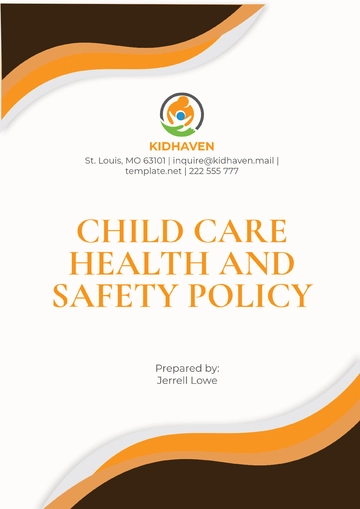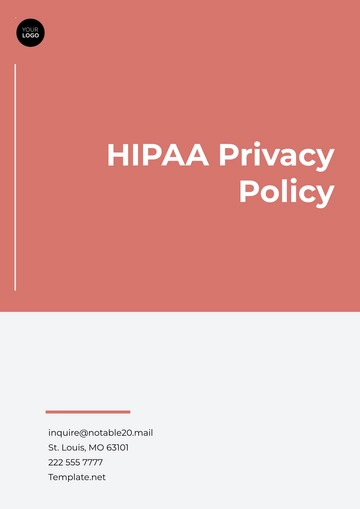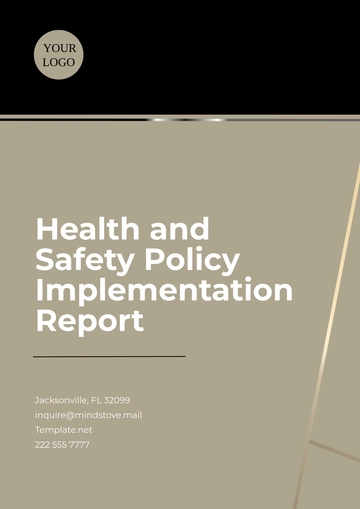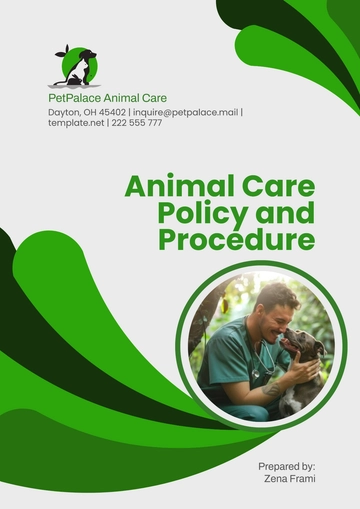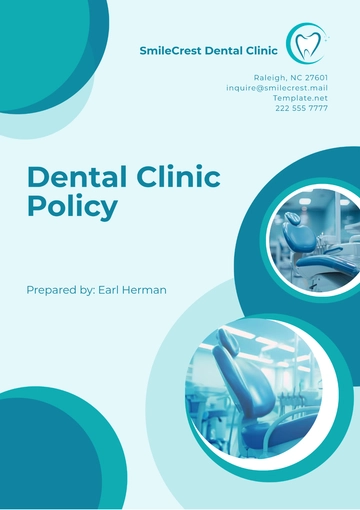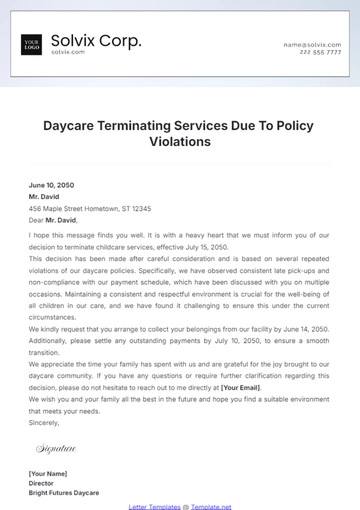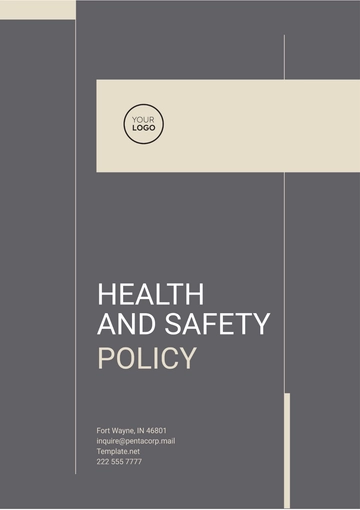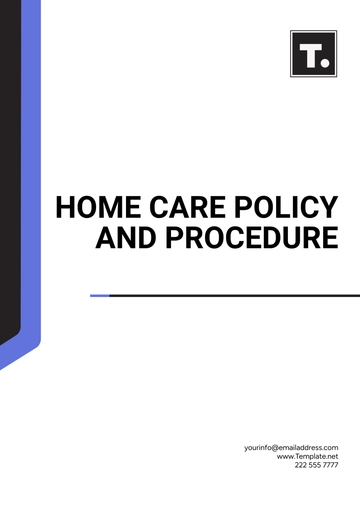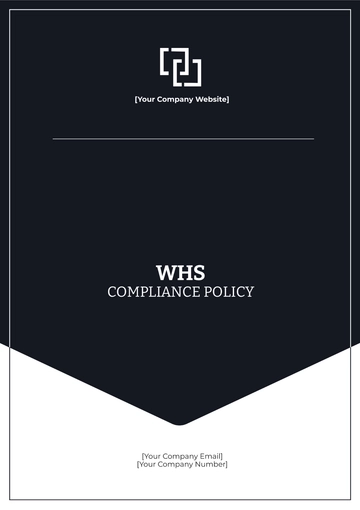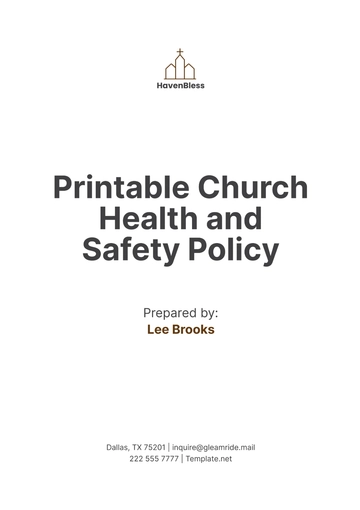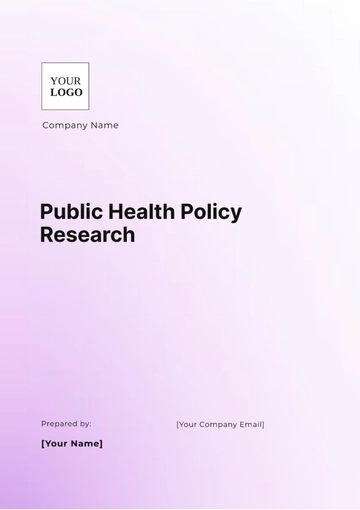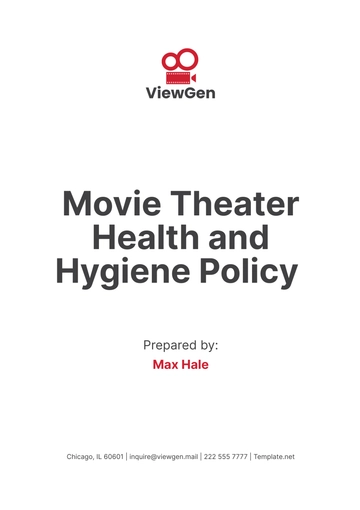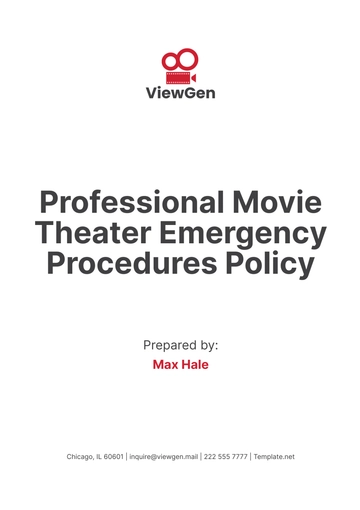Free Nursing Home Wound Care Policy
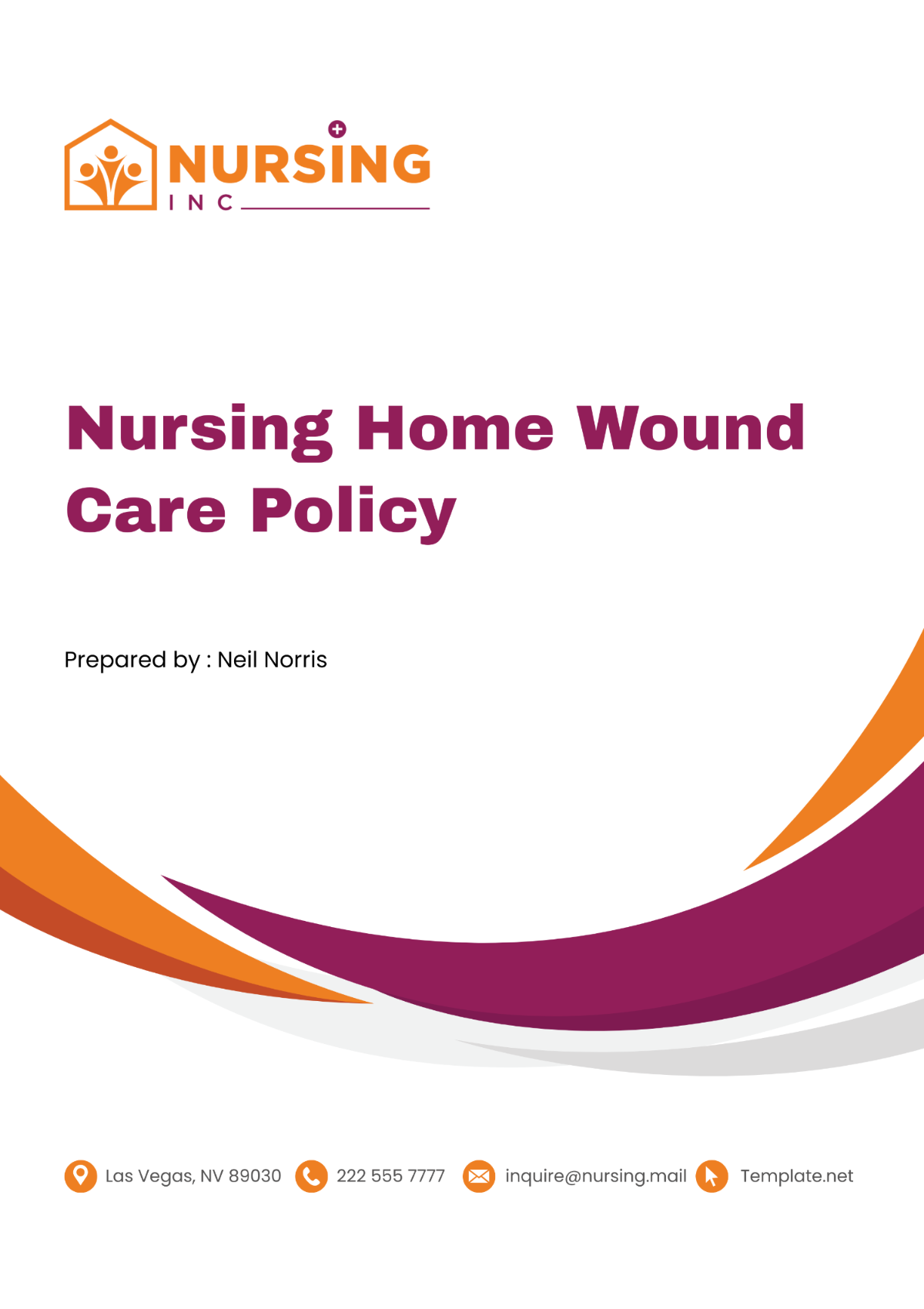
This comprehensive policy has been developed by [Your Company Name] to ensure a systematic, coordinated and continuous approach to wound care in nursing home settings, effective from [Date]. For further information or clarification about the policy, please feel free to contact us at [Your Company Email].
I. Policy Statement
At [Your Company Name], we uphold a profound commitment to ensuring the highest standards of wound care across all our nursing home facilities. Our dedicated approach is rooted in the belief that the health, recovery, and overall well-being of our residents must be prioritized without compromise. By adhering to stringent safety protocols and quality measures, we strive to provide care that not only addresses the immediate needs associated with wounds but also fosters an environment conducive to healing and comfort. This policy sets forth our unified standards for wound care, emphasizing evidence-based practices, continuous staff education, and a deep-seated commitment to resident-centric care.
II. Scope of the Policy
This comprehensive wound care policy is applicable to all personnel within our nursing home settings. This encompasses a wide range of staff members, including but not limited to, medical professionals, nursing staff, care providers, training managers, and external health partners. Our collaborative approach ensures that everyone involved in the care of our residents is fully aware of and trained in the procedures and standards outlined in this policy. By fostering a cohesive environment, we aim to streamline wound care management across all facilities, ensuring consistency and excellence in the care provided.
III. Preventive Measures
Understanding that prevention is key to effective wound management, [Your Company Name] implements rigorous risk assessment protocols to identify residents at an elevated risk of developing wounds. This includes regular inspections to identify early signs of pressure ulcers, skin tears, or other conditions that may lead to wounds. Our preventive strategy includes:
Risk Assessment: Utilizing evidence-based tools to assess each resident's risk of developing wounds upon admission and periodically thereafter.
Regular Inspections: Conducting daily inspections of high-risk residents and implementing preventive measures, such as pressure-relieving devices, to mitigate the risk.
Education and Awareness: Educating residents and their families about preventive measures, nutrition, and hydration important for skin health.
IV. Wound Management and Care
Effective wound management is pivotal in promoting healing, preventing infection, and ensuring the comfort and well-being of our residents. [Your Company Name]'s wound care protocol includes:
Cleaning and Dressing: Wounds are cleaned and dressed following the latest guidelines for wound care to promote healing and prevent infection. This includes the use of approved, high-quality wound care materials and dressings tailored to the type of wound and the resident's individual needs.
Pain Management: Implementing pain management strategies that address the discomfort associated with wound care procedures, ensuring that residents receive compassionate care that acknowledges their pain and seeks to minimize it.
Monitoring for Infection: Close monitoring of wounds for signs of infection, with prompt intervention and notification to healthcare professionals when infection is suspected.
V. Staff Training and Education
Recognizing the critical role that knowledgeable and skilled staff play in delivering high-quality wound care, [Your Company Name] commits to ongoing training and education programs. These programs are designed to:
Enhance Skills: Provide comprehensive training on the latest wound care techniques, technologies, and products to ensure that all staff are equipped with the knowledge necessary to deliver effective wound care.
Best Practices: Regularly update staff on best practices in wound management, including the prevention and treatment of infections, pain management, and the psychological impacts of wounds on residents.
Continuous Learning: Encourage a culture of continuous learning and improvement, where staff are motivated to stay informed about advancements in wound care research and apply this knowledge in their daily practice.
VI. Documentation and Reporting
Effective documentation and reporting are the linchpins of our Nursing Home Wound Care Policy at [Your Company Name]. This protocol ensures that every step of the wound care process is meticulously recorded, providing a comprehensive history of each resident's wound care management. This detailed documentation supports continuous, personalized care and facilitates the early detection of complications.
Documentation: Every aspect of wound care, from initial assessment to daily care activities, treatment plans, resident responses, and any complications, is documented in the resident's medical record. This documentation includes specifics such as wound size, depth, appearance, treatment modalities used, and the resident's response to treatment. Our electronic health records system enhances the efficiency and accuracy of this process, ensuring real-time updates are accessible to the entire care team.
Reporting: Any signs of infection, deterioration, or other complications observed during wound care must be immediately reported to the attending physician or wound care specialist. This prompt reporting is crucial for adjusting care plans swiftly to address complications and prevent further harm.
VII. Review of the Policy
[Your Company Name] is committed to the continuous improvement of our wound care practices. To this end, our Nursing Home Wound Care Policy undergoes a rigorous review process.
Annual Review: This policy is reviewed at least annually to ensure it aligns with the latest clinical guidelines, research findings, and best practices in wound care. These reviews allow us to update our practices to reflect new knowledge and technologies in the field of wound care.
Feedback-Driven Updates: Changes to the policy may also be prompted by feedback from our staff, residents, and their families. We value the insights of those on the front lines of care and those receiving care, recognizing that they can offer unique perspectives on the effectiveness of our wound care approaches.
VIII. Policy Implementation
Effective implementation of the Nursing Home Wound Care Policy is a critical responsibility of [Your Company Name]'s management team. Ensuring that all staff members, from medical professionals to care providers, are not only aware of the policy but also understand how to apply it in their daily work is essential for its success.
Dissemination: The policy is communicated to all staff members, professionals, and external partners involved in resident care. This is achieved through a combination of training sessions, informational meetings, and distribution of policy documents.
Accessibility: We also ensure that the policy is accessible to all, available in formats and languages that meet the needs of our diverse staff population. This inclusivity ensures that no barrier to understanding or implementing the policy exists, promoting a uniform standard of care across all facilities.
IX. Non-Compliance
[Your Company Name] takes compliance with this policy seriously. Non-compliance not only undermines the quality of care we provide but also jeopardizes the health and safety of our residents.
Investigation: Any breaches of this policy, whether through neglect, misconduct, or misunderstanding, trigger an immediate investigation. This process is designed to understand the circumstances surrounding the breach and to determine the appropriate course of action.
Consequences: Actions taken in response to non-compliance may range from additional training or reassignment to disciplinary measures, depending on the severity and nature of the breach. All actions are conducted in accordance with applicable laws, regulations, and company policies, ensuring fairness and accountability.
Preventive Measures: Beyond addressing specific incidents of non-compliance, [Your Company Name] is committed to preventing future breaches. This may involve reviewing and adjusting our training programs, updating policy documents, or making changes to our operational procedures to better support staff in complying with our wound care standards.
The Nursing Home Wound Care Policy of [Your Company Name] is a comprehensive framework designed to ensure the highest quality of wound care for our residents. By prioritizing documentation and reporting, regularly reviewing and updating our practices, implementing the policy effectively across all staff levels, and maintaining strict protocols for dealing with non-compliance, we uphold our commitment to excellence in resident care and safety.
X. Continuous Improvement
Our Nursing Home Wound Care Policy embodies [Your Company Name]'s commitment to excellence in resident care. By establishing clear guidelines, promoting preventive measures, ensuring meticulous wound management, and fostering an environment of continuous staff development, we set a standard of care that reflects our dedication to the health and well-being of every resident in our care.
Certainly, including contact information at the end of the policy can enhance accessibility and transparency, allowing staff, residents, families, and partners to reach out for further clarification, support, or to provide feedback on the policy itself. Here's how you can incorporate standard placeholders for contact information:
For further inquiries or feedback regarding our Nursing Home Wound Care Policy, please do not hesitate to contact us:
Contact Name: [Your Name]
Phone: [Your Company Phone Number]
Email: [Your Company Email]
Address: [Your Company Address]
[Your Company Name] is dedicated to providing the highest level of care and welcomes your questions and feedback as we strive to continually improve our services.
Created and Issued by: [Your Company Name]
Policy Effective Date:
Next Review Date:
- 100% Customizable, free editor
- Access 1 Million+ Templates, photo’s & graphics
- Download or share as a template
- Click and replace photos, graphics, text, backgrounds
- Resize, crop, AI write & more
- Access advanced editor
Create a robust wound care policy with Template.net's Nursing Home Wound Care Policy Template. Editable and customizable using our intuitive AI editor tool, this template allows you to craft detailed policies to ensure optimal wound management for residents. Streamline procedures, enhance staff training, and prioritize resident comfort and recovery. Simplify policy creation and elevate wound care standards with Template.net today!
You may also like
- HR Policy
- Restaurant Policy
- Company Policy
- Accounting Policies and Procedures
- Website Policy
- Privacy Policy
- Safety Policy
- School Policy
- IT and Software Policy
- Law Firm Policy
- Construction Policy
- Interior Design Policy
- Travel Agency Policy
- Education Academic Policy
- Security Policy
- Real Estate Policy
- Expense Policy
- Software Policy
